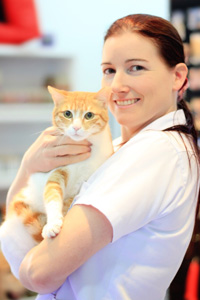August 20, 2020 by Dr. Sigrun Hackl
Dreaded Dubai summers with their high humidity and temperatures in the 40s keep us indoors and blessing the inventors of modern a/c. I would imagine the same goes for our furry friends, as they visibly appreciate the cool air inside. However, how do we take our dogs for a walk in this heat? What do we do with our fervently outdoor oriented cats, who will scream the place down if the doors aren’t opened?
As for the cats, it is fairly easy. They are well adapted to desert climate and can usually manage. In any case, keep them indoors throughout the hottest hours of the day. Make sure they have access to cooler areas whenever they need it, and, of course, fresh water at all times. Do check their paws, as they can get burns from hot surfaces outside. Please be extra careful with long coated and short nosed breeds, as they are much less adapted and need much closer monitoring in this climate!
Now with the dogs, some breeds are better suited than others. While dedicated cold climate breeds with thick fluffy coats suffer a lot in the heat, desert breeds may still be happy to run and roam. Short nosed breeds have no efficient cooling system, so they are at the highest risk of overheating and need the most careful management through summer.

Let’s see what can be done to help all of them through to cooler days:

If your dog appears restless, is panting heavily with a wide open mouth and dark red gums, and does not appear to settle or calm down, better make your way to the clinic right away. He may have overheated! Always give us a call before you come so that we can prepare. Give the dog a cold shower before you head off. Keep the a/c running in the car. You may even take a wet towel with you that covers the dog in the car. Flip that towel over every 2 minutes to draw the heat from the body. Heat stroke can cause delayed and permanent damage to the body, so it should always be seen and treated with IV fluids to protect the organs and minimise the damage!

Veterinary Surgeon
Street 70, Next to Premier Inn Hotel, Dubai Investments Park,
Green Community – Dubai, UAE
Our Opening Hours:
Monday to Friday : 9:00 am to 9:00 pm
Saturday and Sunday : 10:00 am to 8:00 pm
Damac Hills 2 Community Mall, Dubai, UAE
Our Opening Hours:
Everyday : 9:00 am to 8:00 pm
Blue Oasis Veterinary Clinic
Copyright© 2008 All rights reserved